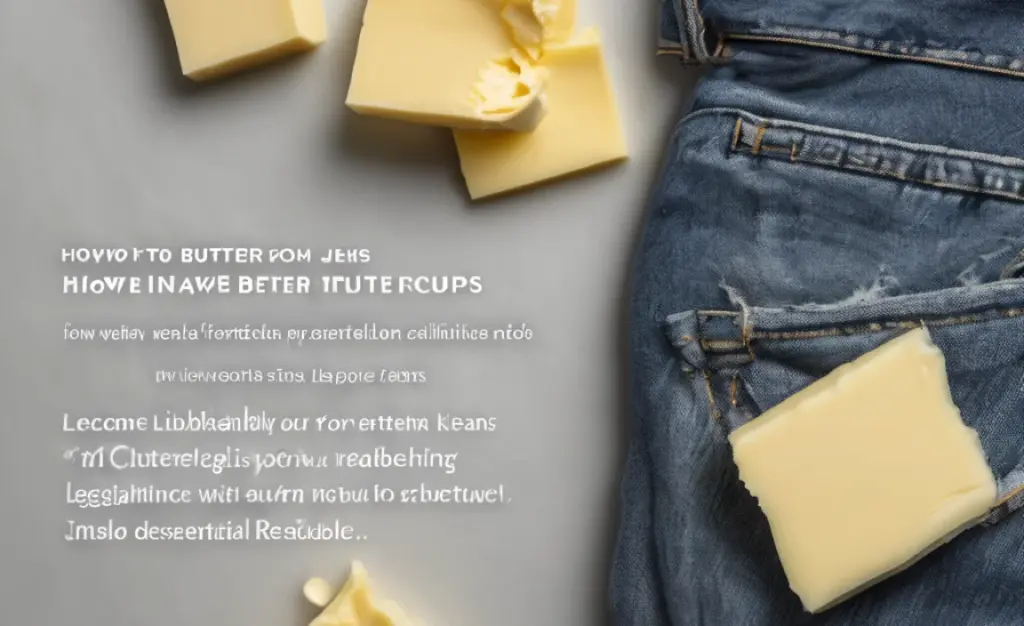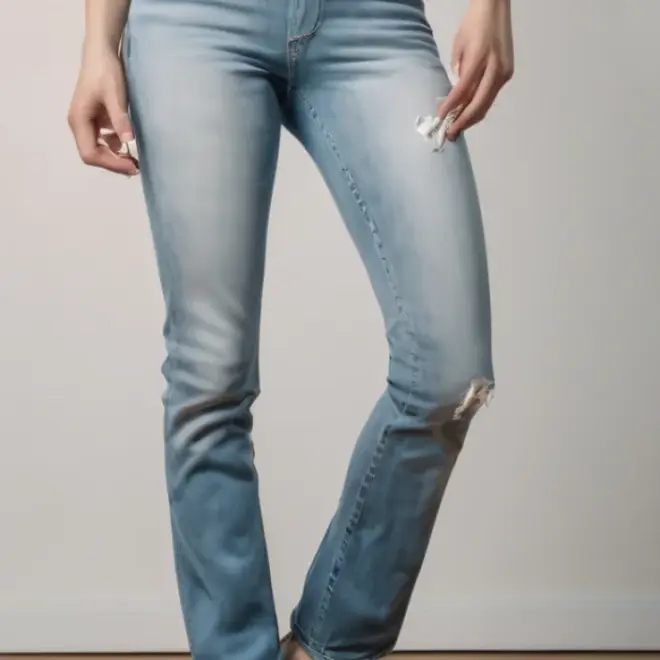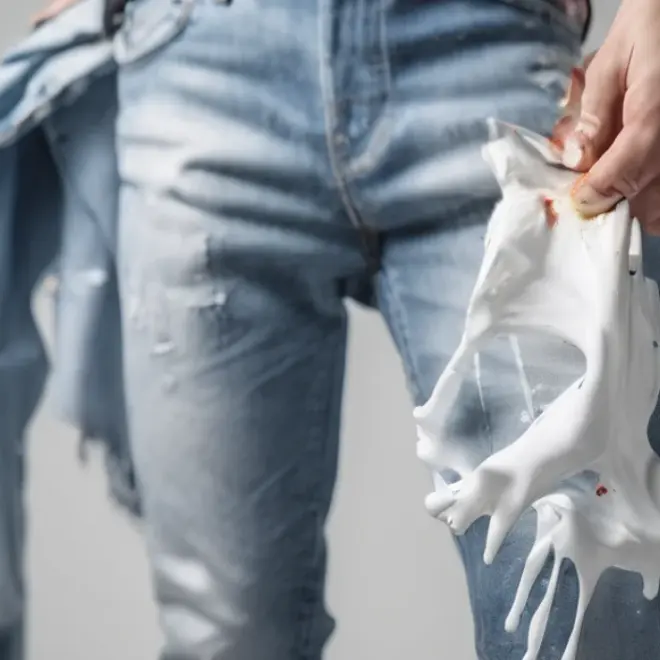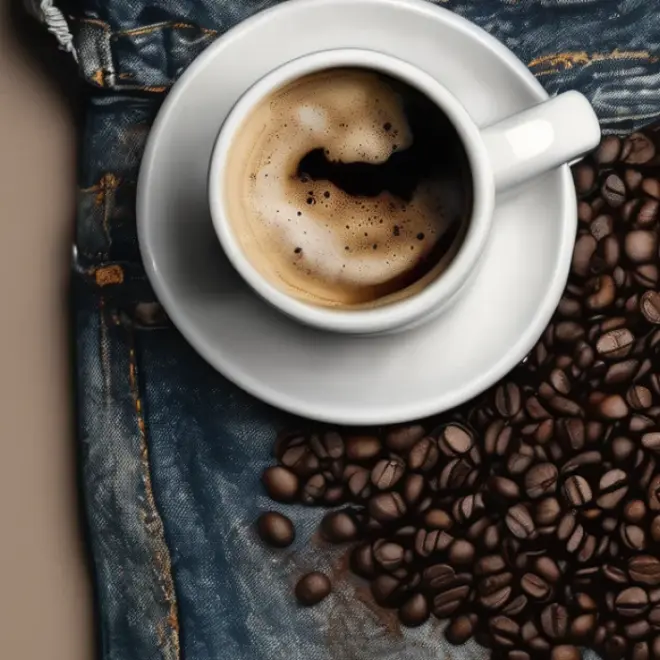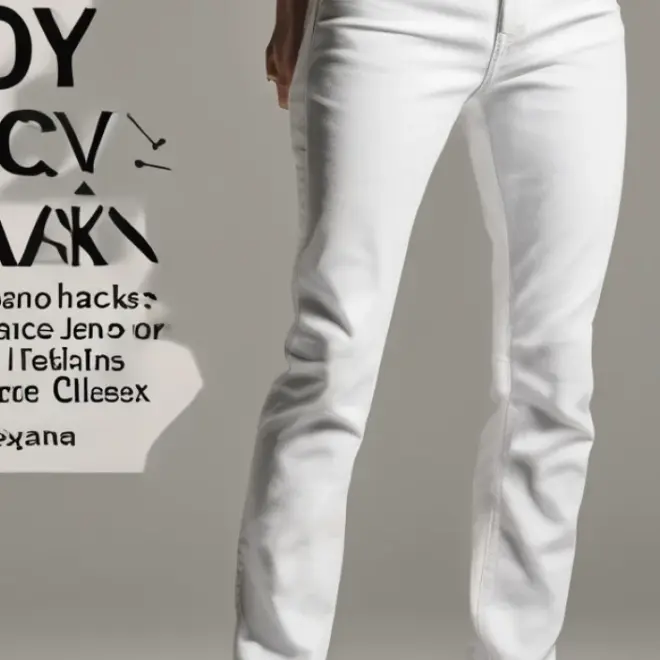For stubborn butter stains on your jeans, act fast! Gently scrape off excess butter, then use a stain remover or dish soap directly on the spot before washing. With the right steps, your jeans can look as good as new.
Butter stains on your favorite jeans can feel like a fashion emergency. That creamy, delicious culprit can leave an unwelcome greasy mark, making you wonder if your jeans are ruined. Don’t fret! These common stains are entirely removable with a bit of know-how and some quick action.
In this guide, we’ll walk you through a simple, effective process to banish those butter spots from your denim. We’ll cover everything from what to do immediately after the spill to the final wash. You’ll be confident in tackling this issue and keeping your jeans looking their best. Let’s get those jeans back in rotation!
Understanding Butter Stains on Denim
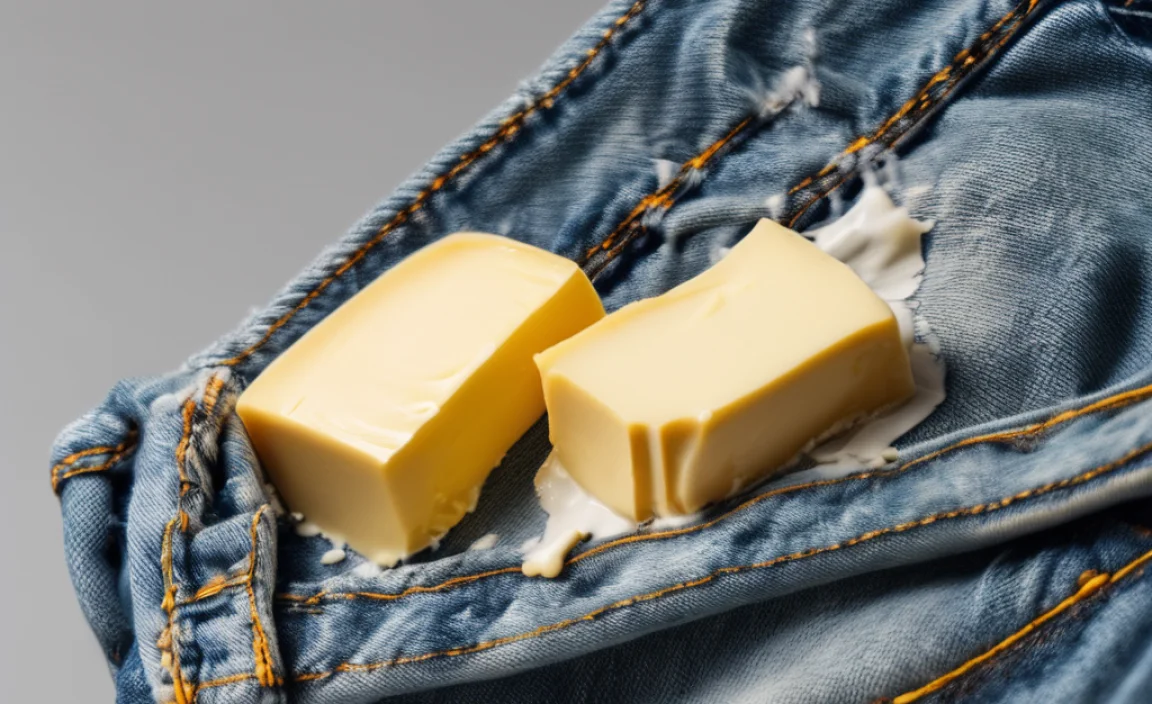
Butter, and other fatty or oily substances, create a particular type of stain. Unlike water-soluble stains, oil stains soak into the fabric’s fibers, making them appear darker or more visible. The longer butter sits on your jeans, the deeper it penetrates, and the harder it becomes to remove. This is why prompt action is your best friend when dealing with a butter mishap.
Denim, particularly raw or dark-wash denim, can be quite absorbent. While this gives jeans their characteristic look and feel, it also means they can hold onto stains more readily. However, the sturdy nature of denim also means it can withstand some gentle but effective cleaning methods.
Essential Tools for Butter Stain Removal
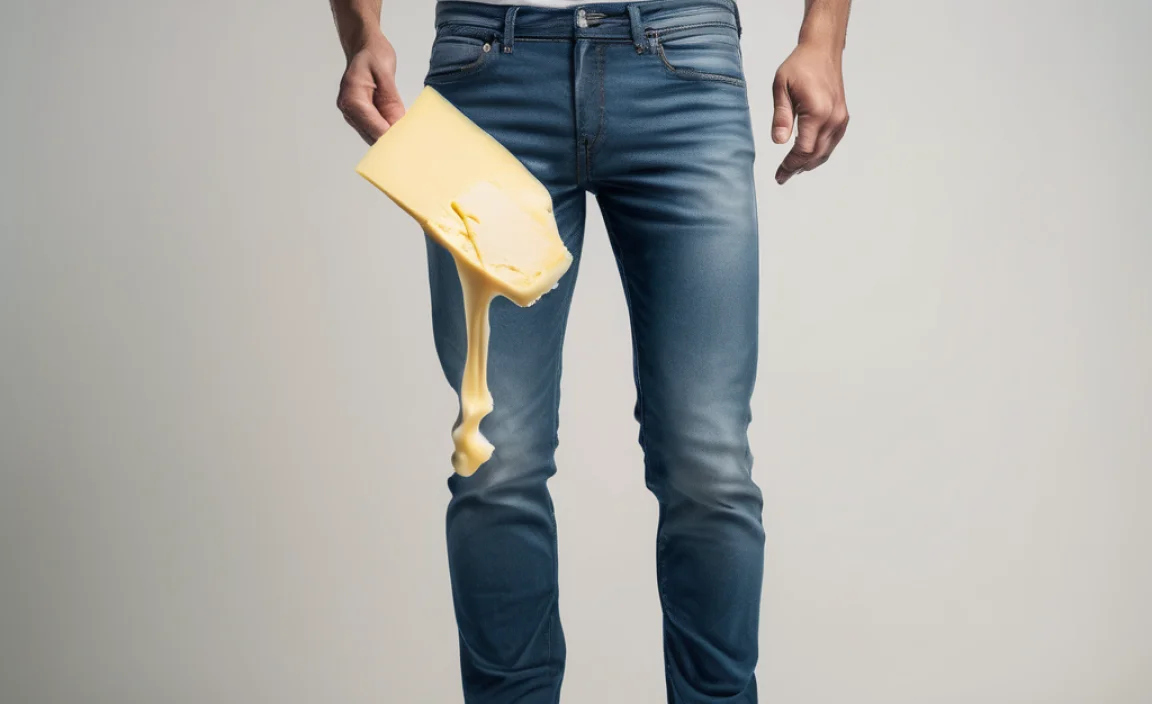
You likely have most of what you need already in your home. Having these items on hand before you start will make the process smoother and more successful.
- Butter knife or dull edge of a spoon: For gently scraping off excess butter.
- Paper towels or clean cloths: To blot and absorb any loose oil.
- Absorbent powder (optional but highly recommended): Cornstarch, baking soda, or talcum powder can help soak up excess grease.
- Liquid dish soap: A degreasing powerhouse, it’s excellent at breaking down oil and grease. Look for one specifically designed to cut grease.
- Stain remover: A commercial stain remover formulated for grease or oil stains. Check the product’s label for suitability on denim.
- Washing machine: For the final cleaning cycle.
- Cool or lukewarm water: Hot water can sometimes set grease stains.
Step-by-Step: How to Remove Butter From Jeans

Now, let’s get down to business. Follow these steps carefully for the best results. Remember, speed is of the essence!
Step 1: Act Fast and Remove Excess Butter
As soon as you notice the butter spill, grab your butter knife or the edge of a spoon. Gently scrape off as much of the excess butter as you can. Be careful not to rub it further into the fabric. The goal here is to remove the bulk of the greasy substance before it has a chance to truly embed itself.
Think of it like carefully lifting a blob of sticky material without smearing it. You want to lift it away from the denim fibers. If the butter has hardened slightly, gently scrape it off in small pieces. Avoid using a sharp object, as this could damage the denim.
Step 2: Blot, Don’t Rub
Once the excess butter is removed, take a clean paper towel or cloth and gently blot the stained area. The aim here is to absorb any remaining surface grease. Again, avoid vigorous rubbing, as this can spread the stain and push it deeper into the fabric. Blotting helps lift the oil out of the fibers and onto the towel.
You might need to use several paper towels or sections of a cloth to effectively absorb the grease. Keep blotting until you’re no longer seeing a significant amount of butter transferring to the towel. This step might seem small, but it significantly reduces the amount of grease the fabric needs to absorb in the next stages.
Step 3: Apply an Absorbent Powder (Optional but Recommended)
This is where magic starts to happen for stubborn grease. If you have cornstarch, baking soda, or talcum powder, sprinkle a generous amount directly onto the remaining stain. These powders are excellent at absorbing oil. Let the powder sit on the stain for at least 15-30 minutes. For really tough or old stains, you can leave it on for a few hours, or even overnight.
The powder will clump and possibly change color as it draws the grease out of the denim. Once the powder has done its work, gently brush it off or vacuum it away. You should notice that the oily spot appears significantly lighter.
Step 4: Pre-Treat the Stain
Now it’s time to tackle any residual grease. You have two excellent options here: liquid dish soap or a commercial stain remover.
Option A: Liquid Dish Soap
Liquid dish soap is a fantastic degreaser. Apply a small amount of a good quality, grease-cutting liquid dish soap directly onto the stain. Gently rub it into the fabric with your fingers or a soft-bristled brush (like an old toothbrush). Work the soap into the fibers, ensuring it covers the entire stained area. Let it sit for about 5-10 minutes to allow it to break down the grease.
Option B: Commercial Stain Remover
If you prefer, use a commercial stain remover specifically designed for grease and oil stains. Follow the product’s instructions carefully. Typically, you’ll apply the remover directly to the stain, let it sit for a specified amount of time (often 5-15 minutes), and then proceed. Always test the stain remover on an inconspicuous area of the jeans first to ensure it doesn’t cause discoloration.
For example, reputable stain removers like OxiClean or Shout often have specific formulations for grease. Always refer to the product’s official usage guidelines and safety information.
Step 5: Wash the Jeans
After pre-treating, it’s time to wash the jeans. Wash them in your washing machine using your regular laundry detergent. It’s crucial to use cool or lukewarm water for this wash, as hot water can sometimes set or further embed oil stains.
Check the care label on your jeans for the recommended washing temperature. If the care label suggests cold water, stick to that. Some detergents are specifically formulated for cold water washes and can be very effective. If you’ve used a stain remover, ensure you follow its specific washing instructions, which usually involve rinsing the pre-treatment agent out thoroughly.
Step 6: Inspect & Repeat if Necessary
This is a critical step! Before you put the jeans in the dryer, inspect the stained area carefully. If the stain is still visible, do NOT put the jeans in the dryer. The heat from the dryer will likely set the stain permanently, making it much harder, if not impossible, to remove later.
If the stain remains, repeat the pre-treatment (step 4) and washing (step 5) process. Sometimes, stubborn butter stains require a second attempt. You might even consider trying the other pre-treatment option (if you used dish soap, try a commercial remover, or vice-versa) for a more tenacious stain.
Step 7: Dry the Jeans
Once you are absolutely certain the stain is gone, you can dry your jeans. It’s often best to air dry them initially to be completely sure. If they look good after air drying, you can then tumble dry them according to their care label, or continue air drying if that’s your preference. Air drying is the gentlest method for fabrics and helps prevent shrinkage.
Understanding Different Types of Butter Stains
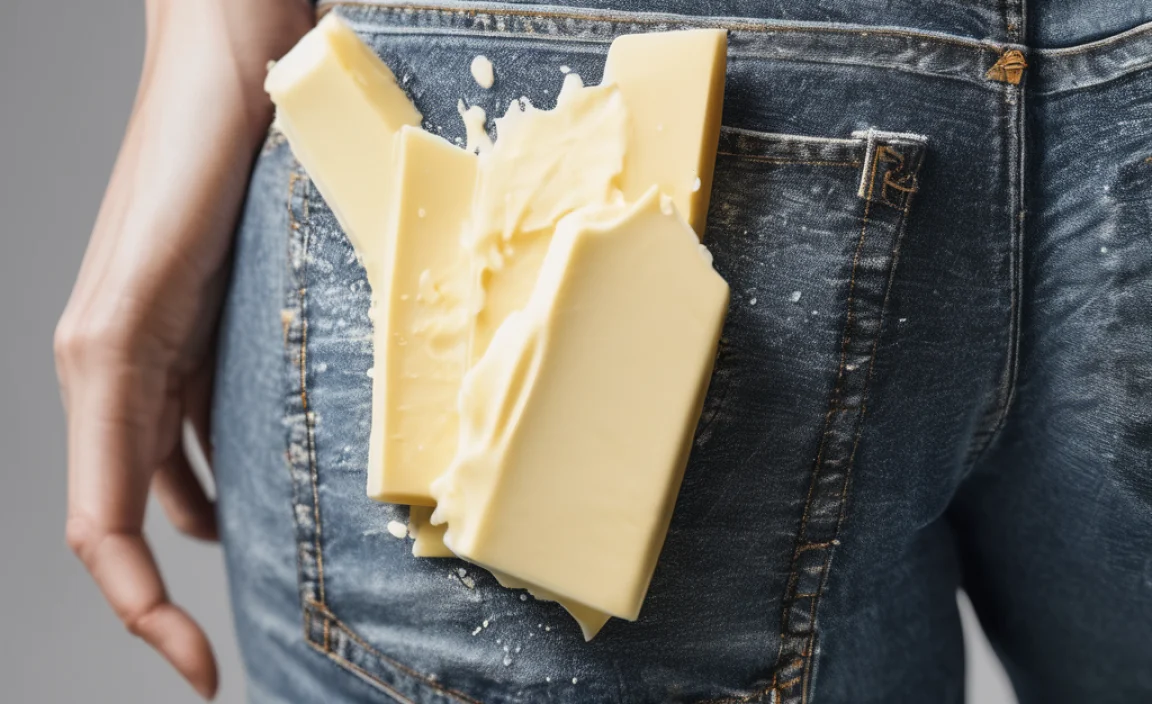
Not all butter spills are the same. The state of the butter and the type of fat content can slightly alter the approach, though the core principles remain the same.
| Type of Butter Stain | Considerations | Recommended Approach |
|---|---|---|
| Fresh, Soft Butter | Easiest to remove as it hasn’t deeply penetrated. | Quick scraping, blotting, and immediate pre-treatment are highly effective. |
| Melted Butter | Spreads more easily, can penetrate quickly. | Wipe up excess immediately, use absorbent powder generously, and pre-treat. |
| Salted Butter | The salt crystals could potentially cause minor abrasion if rubbed harshly during removal. | Gentle scraping and blotting are paramount. The salt itself usually washes out. |
| Clarified Butter (Ghee) | Higher fat content; the oil might be more concentrated. | Requires thorough pre-treatment with a strong degreaser like dish soap. |
Advanced Tips & Tricks

For those particularly stubborn or older butter stains, here are a few extra tips that might help:
- Enzyme-Based Cleaners: Some stain removers contain enzymes that are specifically designed to break down protein and grease. Look for “enzyme-based” or “bio-based” on the label. These can be very effective on tough organic stains.
- Oxygen Bleach: For white or light-colored denim (if you’re sure they can handle it), an oxygen bleach soak can be beneficial. Follow the product’s instructions carefully. Always test on an inconspicuous area. The EPA recommends using eco-friendly laundry practices, and oxygen bleach can be a good option when used correctly.
- Rubbing Alcohol (with caution): In some cases, a small amount of rubbing alcohol applied to a clean cloth can help break down greasy residue. Blot gently. However, test this on an inconspicuous area first, as alcohol can sometimes affect dye in certain fabrics.
- Professional Cleaning: If you have tried multiple methods and the stain persists, especially on a valuable or delicate pair of jeans, consider taking them to a professional dry cleaner. They have specialized solvents and techniques that might be able to tackle the stain without damaging the fabric.
Preventing Butter Stains on Jeans
While it’s impossible to avoid every spill, a few habits can minimize the risk of butter stains on your jeans:
- Be Mindful While Eating: Pay attention when you’re eating foods that involve butter, like toast, corn on the cob, or buttery pastries. A simple napkin can be a lifesaver.
- Wear an Apron: If you’re cooking with butter or expect a messy meal, wear an apron over your jeans. This is the most foolproof way to protect your clothing.
- Pre-treat High-Risk Areas: For very expensive or light-colored jeans, you might consider applying a fabric protector spray designed for clothing. While this won’t make them stain-proof, it can give you a little more time to react to a spill.
- Keep Wipes Handy: For on-the-go snacks, consider keeping some eco-friendly cleaning wipes in your bag. For a small spill, a quick wipe can often prevent a stain from setting.
Frequently Asked Questions About Removing Butter Stains
Q1: How quickly do I need to treat a butter stain on jeans?
The sooner, the better! Fresh stains are always easier to remove than old, set-in ones. Aim to treat it within minutes if possible.
Q2: Can I use hot water to wash butter stains out of jeans?
No, it’s generally not recommended. Hot water can often set grease stains, making them much harder to remove. Stick to cool or lukewarm water when initially washing out a butter stain.
Q3: Will dish soap damage my jeans?
Standard liquid dish soap used for handwashing dishes is generally safe for most denim fabrics when pre-treating stains. However, always rinse thoroughly and test on an inconspicuous area if you’re concerned about colorfastness.
Q4: What if the butter stain is old and dried?
For old stains, start by gently scraping off any hardened residue. Then, proceed with the absorbent powder step (Step 3) and leave it on longer, perhaps overnight. Follow with a strong pre-treatment of dish soap or a commercial stain remover, and be prepared to repeat the process.
Q5: Can I use bleach on a butter stain on my jeans?
Chlorine bleach should be avoided on colored denim as it will likely cause discoloration. For white or light-colored denim, oxygen bleach is a safer alternative and can be effective when used according to product instructions. Always check your jeans’ care label and test any bleach product on a hidden area first.
Q6: How do I know if the stain is completely gone before drying?
After washing and before drying, carefully inspect the stained area under good light. If you can still see any discoloration or oily sheen, the stain is still there. Do not proceed to dry the jeans in a machine; repeat the cleaning process.
Conclusion
Dealing with butter stains on your beloved jeans doesn’t have to be a stressful ordeal. By understanding that these are grease stains and acting promptly, you can effectively remove them. From gently scraping off excess butter to employing the degreasing power of dish soap or a quality stain remover, followed by a careful cool-water wash, your jeans can be restored.
Remember to always inspect your jeans before drying and repeat the process if necessary. With these proven methods and a little patience, you’ll be able to confidently tackle butter stains and keep your denim looking its best for years to come. Happy cleaning!


